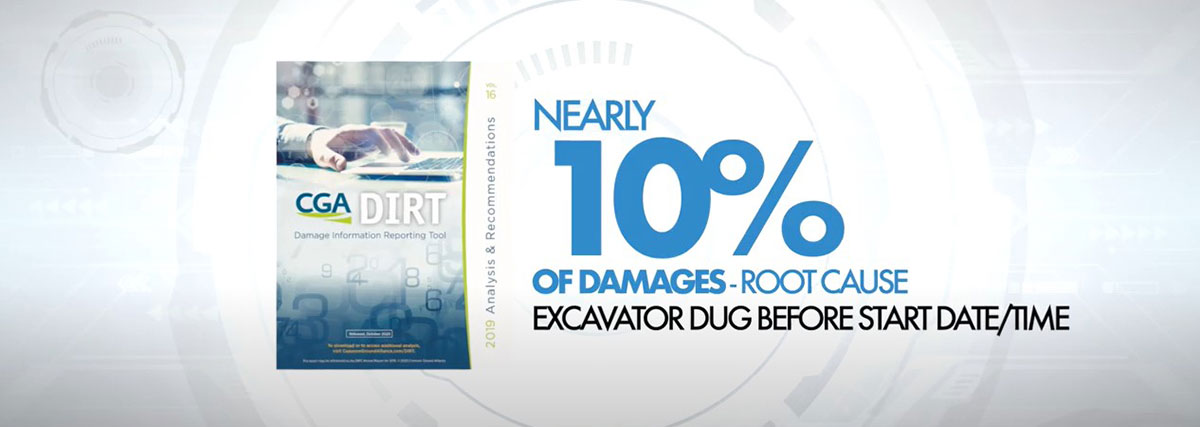Automated Screening Software for One-Call Reduces Asset Damage
If you are a contractor working on an excavation project in the United States, the law requires you to dial the 811 number before the digging begins. This is to ensure that during the excavation, you do not cause any unwarranted damage to any assets that might be lying underground.
Any digging work, however big or small, must be notified to the One-Call notification center at least 48 to 72 hours before the work commences. You can go ahead only if you get an all-clear signal from the authorities. How does this work, though? Are there any challenges? Let's find out.
Case Example
Assume that you are a building contractor in California who is in charge of a project that involves erecting a warehouse at a specified open area. The land looks good, you got all your paperwork in place, and now, you only have to start digging to lay the foundation of the building.
Before you do, there is just one more step. You have to notify the One-Call ticket center. It is then their job to identify all the utility companies that may be operational in and around the area where your building is scheduled to be constructed.
These utility operators have to, in turn, inform the One-Call center if any of their assets are present in that region. Until these companies give their go-ahead, you cannot start your excavation process.
Challenges with Conventional Methods
Although it is illegal to begin digging an area unless you get an all-clear sign from the utility companies, excavators often rush into action beforehand.
In some cases, they do not want to delay their work because it could take forever for the manually-operated One-Call center to reach the utility companies. In other cases, the digging contractors assume that no assets are lying underground. Such actions can be highly dangerous because there might be critical infrastructure that can be damaged in the excavation process.
Imagine that your excavation team is digging an area assuming no one will be harmed, and you end up damaging an electric line that disrupts the power supply to the entire neighborhood, including your construction site.
It is not just about disruptions, either. Your excavators could get seriously injured if they accidentally hit a hazardous infrastructure, such as a gas pipeline.
The Uniqueness of ScreenAccess
The One-Call centers in the US are overloaded with tens of millions of tickets in a year. Naturally, many excavation requests tend to be delayed with such volume and a manual ticket management system.
To address this issue, Pelican Corp has designed a completely automated software called ScreenAccess. It is built as an extra layer of communication between the One-Call requester and the ticket management system.
The software relies on advanced technology, which is a combination of a spatial engine and a data engine, to screen every One-Call request and intelligently send an automated response in no time.
Here is how it works. The software reads an incoming locate request and automatically identifies assets in and around the area. It then notifies the concerned utilities and generates a map indicating the excavation plan and the assets (if any). Based on the proximity of the assets to the dig, the software sends an automated response to the requester or the internal team.
Such responses could be of several kinds. One example is a warning letter that prohibits excavation work. It could also be an intimation letter that states that there are assets around the area, but work may continue. Further, in case of no critical danger, there could be a notification sent to an internal team of the utility informing that a blasting activity is scheduled to take place within 3 meters of their assets.
Who Can Benefit from ScreenAccess?
Incorporating the additional layer of the ScreenAccess software can prove a win-win situation for both the excavation requestor and the utilities.
If you are a contractor for an engineering project, you no longer have to worry about delays over getting a permit from the utilities. You can inform your team in a short time whether or not there are any critical assets that it needs to steer clear of before the start of a project.
For utility provides, there are benefits galore. Thanks to the automated identification and responses from the tool, a utility firm no longer has to deploy teams to visit the site to identify assets. This not only saves time but also cuts down operational costs as the companies can now allocate their employees to other advanced tasks.
Industries with critical assets such as telecommunications, electricity & gas, water & sewage, etc., can now protect their infrastructure, prevent accidents on-site, reduce costs, and save time on ticket responses, all through the automated ScreenAccess solution.
Takeaway
Despite laws that require excavators to send locate requests through the 811 number before commencing any digging task, the tediousness of the manual process causes many engineers to skip the step. It is no wonder then that almost 10 percent of damages to pipelines, electric lines, and other critical assets occur because of rushed excavations.
Such damages cause utility companies to incur huge costs and excavators to be at a higher risk from accidents. Thanks to the screening layer of ScreenAccess, every call to the 811 number can now receive an automated response in minutes.
Installing this software leads to quick commencement of projects, lower repair costs, and most importantly, peace of mind for both the engineers on-site and the management sitting behind their desks at the utility firms.
Screening, sorting, and response management of locate requests at the One-Call center has never been easier.
